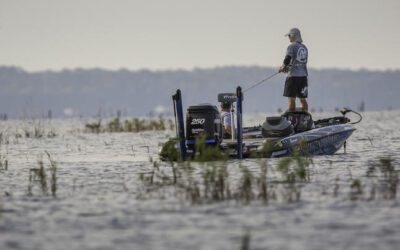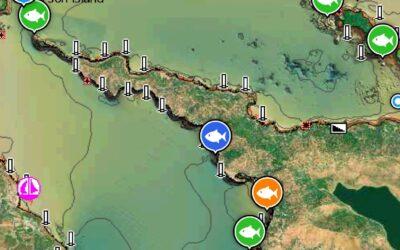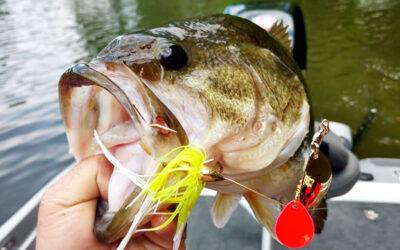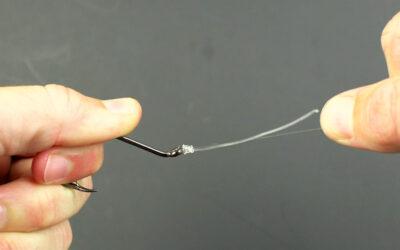How to Identify and Locate Largemouth Bass in Different Seasons
Largemouth bass (Micropterus salmoides) are a popular game fish found in many freshwater habitats across North America. They are highly sought after by anglers due to their aggressive behavior and willingness to take a variety of baits. Identifying and locating largemouth bass in different seasons can be a challenge, but with the right knowledge and techniques, it can be done successfully.
In the spring, largemouth bass can be found in shallow, warm water areas such as the edges of weed beds, flooded timber, and shallow flats. They will be actively feeding on baitfish, frogs, and other aquatic insects. To identify largemouth bass in the spring, look for their characteristic dark green back and sides, with a white belly and a dark lateral line.
In the summer, largemouth bass will move to deeper, cooler water areas such as deep weed beds, drop-offs, and deep points. They will be actively feeding on baitfish, crayfish, and other aquatic insects. To identify largemouth bass in the summer, look for their characteristic dark green back and sides, with a white belly and a dark lateral line.
In the fall, largemouth bass will move to shallow, warm water areas such as the edges of weed beds, flooded timber, and shallow flats. They will be actively feeding on baitfish, frogs, and other aquatic insects. To identify largemouth bass in the fall, look for their characteristic dark green back and sides, with a white belly and a dark lateral line.
In the winter, largemouth bass will move to deeper, cooler water areas such as deep weed beds, drop-offs, and deep points. They will be actively feeding on baitfish, crayfish, and other aquatic insects. To identify largemouth bass in the winter, look for their characteristic dark green back and sides, with a white belly and a dark lateral line.
By understanding the seasonal movements of largemouth bass and the characteristics of their appearance, anglers can successfully identify and locate them in different seasons. With the right knowledge and techniques, anglers can have a successful fishing experience and catch a variety of largemouth bass.
The Best Baits and Techniques for Catching Largemouth Bass in Spring
Spring is an ideal time for catching largemouth bass, as the fish are actively feeding and spawning. To maximize success, anglers should use the right baits and techniques.
Baits
When targeting largemouth bass in the spring, anglers should use a variety of baits. Soft plastic worms, jigs, crankbaits, and spinnerbaits are all effective. Soft plastic worms are especially effective when fished slowly along the bottom. Jigs can be used to target deeper water, while crankbaits and spinnerbaits are best for shallow water. Live bait such as minnows, crayfish, and frogs can also be used.
Techniques
When fishing for largemouth bass in the spring, anglers should use a variety of techniques. Slow-rolling a jig along the bottom is a great way to target deeper water. Crankbaits and spinnerbaits can be used to target shallow water. When using soft plastic worms, anglers should cast them out and let them sink to the bottom before slowly retrieving them. Live bait can be used to target both shallow and deep water. Anglers should also be sure to use a variety of retrieves, as largemouth bass can be finicky and may respond better to a different retrieve.
By using the right baits and techniques, anglers can maximize their success when targeting largemouth bass in the spring. Soft plastic worms, jigs, crankbaits, and spinnerbaits are all effective baits, while slow-rolling a jig along the bottom, casting and retrieving soft plastic worms, and using live bait are all effective techniques. By using a variety of baits and techniques, anglers can increase their chances of success when targeting largemouth bass in the spring.
Understanding the Habits and Behaviors of Largemouth Bass in Summer
Largemouth bass (Micropterus salmoides) are a popular game fish in North America, and their behavior in the summer months is of particular interest to anglers. During this time of year, largemouth bass are more active and can be found in shallow waters, making them easier to catch. To better understand the habits and behaviors of largemouth bass in the summer, it is important to consider the environmental factors that influence their behavior.
Temperature is a major factor in largemouth bass behavior during the summer months. As water temperatures increase, largemouth bass become more active and will move into shallow waters in search of food. They are also more likely to feed during the day, when the water is warmer. In addition, largemouth bass will move to areas with more cover, such as weeds, logs, and rocks, to avoid predators and find shelter from the sun.
The availability of food is another important factor in largemouth bass behavior during the summer. As the water warms, the bass will feed more actively, and they will be more likely to take bait. They will also feed on a variety of prey, including insects, crustaceans, and small fish.
Finally, largemouth bass behavior in the summer is also influenced by the presence of other fish. During this time of year, largemouth bass will form schools and will be more likely to feed in areas where there are other fish. This behavior is beneficial for the bass, as it allows them to find food more easily and to avoid predators.
By understanding the environmental factors that influence largemouth bass behavior in the summer, anglers can better target these fish and increase their chances of success. By fishing in areas with warmer water, more cover, and other fish, anglers can increase their chances of catching largemouth bass.












